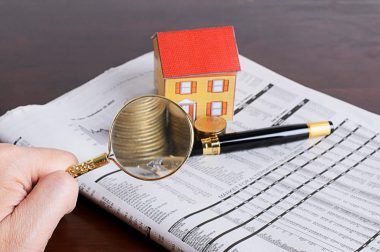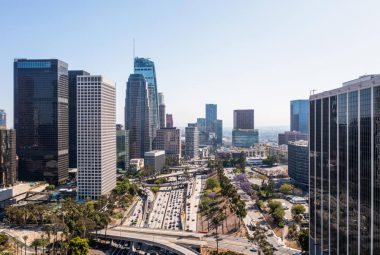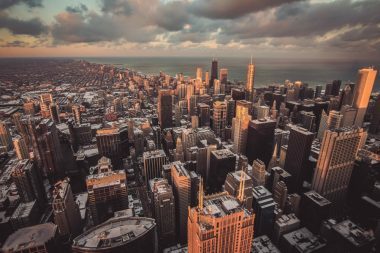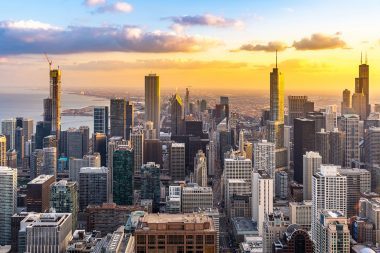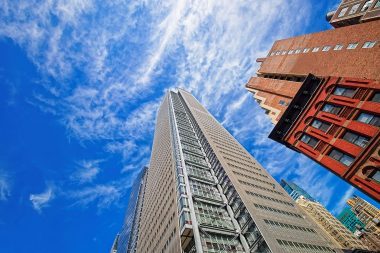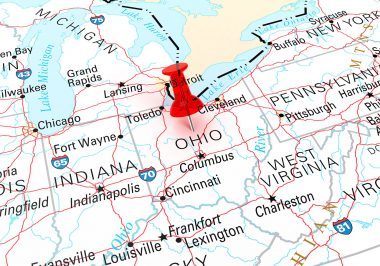10 Most Dangerous Neighborhoods in Pittsburgh, PA [2025 Update]
Updated Mon, Oct 13, 2025 - 10 min read
Top blog articles
Pittsburgh, Pennsylvania, is celebrated for its steel industry heritage, stunning rivers, and vibrant cultural scene. While the Steel City offers numerous safe and charming neighborhoods, it’s important for residents, homebuyers, and visitors to understand which areas experience higher crime rates and safety concerns.
According to the FBI’s Crime Data Explorer, violent crime nationwide decreased by 4.5% in 2024, with murder rates dropping 14.9%. Pittsburgh has mirrored these positive trends in many areas, though certain neighborhoods continue to face challenges related to crime and economic hardship.
Understanding the most dangerous parts of Pittsburgh can help you make informed decisions about where to live, visit, or invest. This comprehensive guide explores the neighborhoods with elevated crime statistics, the factors contributing to these challenges, and the ongoing revitalization efforts bringing hope for the future.
Why Some Pittsburgh Neighborhoods Face Higher Crime Rates
Before we explore specific neighborhoods, it’s important to understand the underlying factors that contribute to elevated crime rates in certain areas:
- Economic disparity: High unemployment rates and limited economic opportunities
- Educational challenges: Reduced access to quality schools and job training programs
- Historical disinvestment: Decades of neglected infrastructure and community resources
- Concentrated poverty: Limited affordable housing options and social mobility
- Gang activity: Drug-related crimes and territorial disputes
The good news? Many of these neighborhoods are currently undergoing significant revitalization efforts, with Governor Shapiro’s historic $62.6 million investment plan working to transform challenged areas into thriving communities.
10 Most Dangerous Neighborhoods in Pittsburgh
1. Homewood
Homewood, located in the eastern part of Pittsburgh, consistently ranks among the neighborhoods with the highest crime rates. This area has historically struggled with economic challenges, high unemployment rates, and gang-related violence. Violent crimes, particularly shootings and assaults, are reported at higher-than-average rates.
Why is Homewood considered dangerous? The high crime rate in Homewood is largely attributed to economic disparity and limited access to quality education and employment opportunities. Despite these challenges, the City of Pittsburgh has launched the Homewood Active Mobility Improvement project focused on safety and community enhancement.
Recent developments: The neighborhood is working toward revitalization, but poverty and crime remain significant issues that residents must navigate carefully.
2. Northview Heights
Northview Heights, located on the north side of Pittsburgh, is primarily a public housing community experiencing high rates of drug-related crime and gang activity. Although law enforcement has increased its presence in recent years, violent crime (especially gun violence) continues to challenge this area.
Why should Northview Heights be on this list? As a low-income area with significant housing density, Northview Heights faces challenges common to similar neighborhoods across the country, including violence and drug-related offenses. According to the National Crime Prevention Council, community engagement and neighborhood watch programs can significantly reduce crime in dense residential areas.
3. Hill District
The Hill District, once a thriving cultural center in Pittsburgh, has experienced significant hardships over the decades. Despite ongoing efforts to rebuild and revitalize, crime rates remain elevated, particularly robberies, assaults, and drug activity. The neighborhood’s proximity to downtown Pittsburgh makes it a critical area for continued development.
What makes the Hill District dangerous? High unemployment and widespread poverty contribute to the issues plaguing the Hill District. Despite its rich history as a center of African American culture and jazz music, the area continues to struggle with violent crime. However, community organizations are actively working to restore the neighborhood’s historic vibrancy.
4. East Hills
East Hills, a small neighborhood on the outskirts of Pittsburgh, experiences elevated rates of both property crime and violent crime. Residents frequently report concerns about burglaries, robberies, and drug-related activity. While some sections of East Hills are relatively safe, certain blocks face serious safety challenges.
Why is East Hills concerning? The combination of high unemployment and drug-related crimes creates an environment where violent incidents, particularly shootings, occur too frequently. Local initiatives aim to address these problems, but East Hills remains an area requiring heightened awareness regarding personal safety.
5. West End
Pittsburgh’s West End, while sometimes overlooked in crime discussions, maintains crime rates higher than the city average. This neighborhood faces both property crime and violent crime, with significant incidents related to drug trafficking and gang violence.
Why is West End dangerous? The West End’s persistent crime rate and proximity to major highways make it a target for drug activity and related crimes. According to SafeWise’s neighborhood safety research, areas near major transportation routes often experience higher crime rates due to increased accessibility for criminal activity.
6. Hazelwood
Hazelwood, situated along the Monongahela River, has undergone significant changes in recent years as part of broader riverfront development initiatives. However, crime remains a persistent concern, particularly property crimes like burglary and theft. While violent crime has seen modest improvement, many residents still report feeling unsafe in certain parts of the neighborhood.
What makes Hazelwood challenging? Hazelwood’s struggle with poverty and aging infrastructure contributes to its inclusion on this list. The area is undergoing development through the Urban Redevelopment Authority’s initiatives, but significant safety concerns persist that residents must address regularly.
7. Beltzhoover
Located on the southern side of Pittsburgh, Beltzhoover has been dealing with crime issues for years. The neighborhood, once considered a stable working-class area, now suffers from high rates of violent crime, particularly shootings. Limited resources and economic opportunities contribute to the ongoing challenges faced by the community.
Why is Beltzhoover on this list? Beltzhoover’s elevated crime rate, combined with its economic struggles, makes it one of the more challenging neighborhoods in Pittsburgh. The area experiences regular gun violence and drug-related crime, making safety a significant concern for residents.
Community response: Local organizations and the Neighborhood Resilience Project are working to build trauma-informed community development strategies to address these challenges.
8. Wilkinsburg
Though technically its own borough rather than part of Pittsburgh proper, Wilkinsburg shares many challenges with Pittsburgh’s most difficult neighborhoods. Located just east of the city, Wilkinsburg struggles with high crime rates, particularly drug-related offenses and violent crime. Some improvements have occurred in recent years, but substantial safety concerns remain.
Why is Wilkinsburg dangerous? The crime rate in Wilkinsburg is driven by economic hardship, limited educational opportunities, and gang activity. Though revitalization efforts have begun, residents still face considerable safety challenges when living in or visiting this area.
9. Larimer
Larimer is a small neighborhood that has historically been overlooked in terms of development and investment. This neglect has resulted in high crime rates, particularly violent crimes like assault and robbery. The neighborhood has seen some new housing developments, but crime remains a significant obstacle to progress.
Why does Larimer make the list? Larimer’s combination of poverty, underdeveloped infrastructure, and crime makes it one of Pittsburgh’s most challenging neighborhoods. However, there’s reason for optimism: the Larimer/East Liberty Choice Neighborhoods Initiative represents a $30 million HUD investment to revitalize the area with 334 new housing units and community improvements.
10. Garfield
Garfield is a neighborhood that has been gradually improving over recent years, attracting new residents and businesses. However, crime (particularly property crime) remains problematic. The area is known for break-ins, theft, and drug-related activity. While violent crime has decreased somewhat, safety concerns persist.
Why is Garfield dangerous? Although Garfield is undergoing redevelopment with new restaurants, shops, and residential projects, the neighborhood still faces significant challenges. Property crime rates remain elevated, and drug-related incidents continue to be reported regularly.
Crime Statistics Context: Understanding the Data
When evaluating neighborhood safety, it’s essential to understand crime statistics in context. According to the FBI’s Uniform Crime Reporting Program, crime data should be viewed alongside:
- Year-over-year trends
- City-wide comparisons
- Regional and national averages
- Economic indicators
- Population density factors
Recent data shows that Pittsburgh, like many American cities, has seen improvements in certain crime categories while facing ongoing challenges in others.
Staying Safe in Any Pittsburgh Neighborhood
Regardless of where you live in Pittsburgh, you can take proactive steps to enhance your personal safety and protect your property. The National Crime Prevention Council recommends:
Home Security Measures:
- Install quality locks on all doors and windows
- Use motion-sensor lighting around entry points
- Consider a home security system with monitoring
- Keep spare keys with trusted neighbors, not under doormats
- Use timers on lights when away from home
Neighborhood Awareness:
- Get to know your neighbors and establish a support network
- Report suspicious activity to police immediately
- Participate in or start a neighborhood watch program
- Keep your property well-maintained and well-lit
- Be aware of your surroundings at all times
Pittsburgh’s Revitalization Efforts: Hope for the Future
It’s crucial to remember that while these neighborhoods currently face higher crime rates, they are also home to many hardworking residents dedicated to improving their communities. Pittsburgh has launched ambitious revitalization initiatives that are already showing results.
The Pennsylvania Department of Community & Economic Development reports that Downtown Pittsburgh revitalization efforts have achieved:
- 93% reduction in homelessness encampments
- Over 3 million square feet of cleaned sidewalks
- Nearly $600 million in combined public and private investment
- Hundreds of new affordable housing units under construction
These initiatives demonstrate that with continued community support, investment, and collaboration, many of Pittsburgh’s challenging neighborhoods have strong potential for positive transformation.
Making Informed Real Estate Decisions
If you’re considering moving to Pittsburgh or purchasing property in the area, thorough research is essential. Understanding neighborhood safety should be just one factor in your decision-making process.
Key considerations for homebuyers:
- Review crime statistics from multiple reliable sources
- Visit neighborhoods at different times of day
- Talk to current residents about their experiences
- Research ongoing development and revitalization projects
- Consider proximity to schools, employment centers, and amenities
- Evaluate long-term investment potential
For those relocating to Pittsburgh, working with experienced moving companies that have extensive knowledge of the city can provide valuable insights into which neighborhoods may be most suitable for your lifestyle and safety requirements.
Pittsburgh’s Safe Neighborhoods: The Flip Side
While this article focuses on challenged areas, it’s important to remember that Pittsburgh offers many wonderful, safe neighborhoods perfect for families and individuals. For a comprehensive look at the city’s most desirable areas, check out our guide to the best neighborhoods in Pittsburgh that are safe and family-friendly.
Popular safe neighborhoods include:
- Squirrel Hill
- Shadyside
- Brookline
- Mount Lebanon
- Point Breeze
- Regent Square
These areas consistently rank high for safety, quality schools, community amenities, and overall livability.
The Bottom Line
Understanding Pittsburgh’s most dangerous neighborhoods helps residents, visitors, and potential homebuyers make informed decisions about where to live, work, and invest. While certain areas face significant challenges related to crime, poverty, and economic hardship, it’s equally important to recognize the resilience of community members and the substantial revitalization efforts underway.
Pittsburgh is a city of transformation, from its steel industry past to its emerging technology and healthcare future. Many neighborhoods that struggle today have the potential to become tomorrow’s success stories, particularly with continued investment, community engagement, and strategic development.
Whether you’re a current resident, prospective homebuyer, or visitor, staying informed about neighborhood conditions, taking appropriate safety precautions, and supporting community improvement initiatives can contribute to a safer, more vibrant Pittsburgh for everyone.
Planning a home purchase or renovation in Pittsburgh? Understanding neighborhood characteristics is just the beginning. For comprehensive guidance on evaluating property age, condition, and value, explore our article on how to determine what year your house was built.
This article was last updated in October 2025 to reflect current crime trends, revitalization initiatives, and community developments in Pittsburgh neighborhoods.
